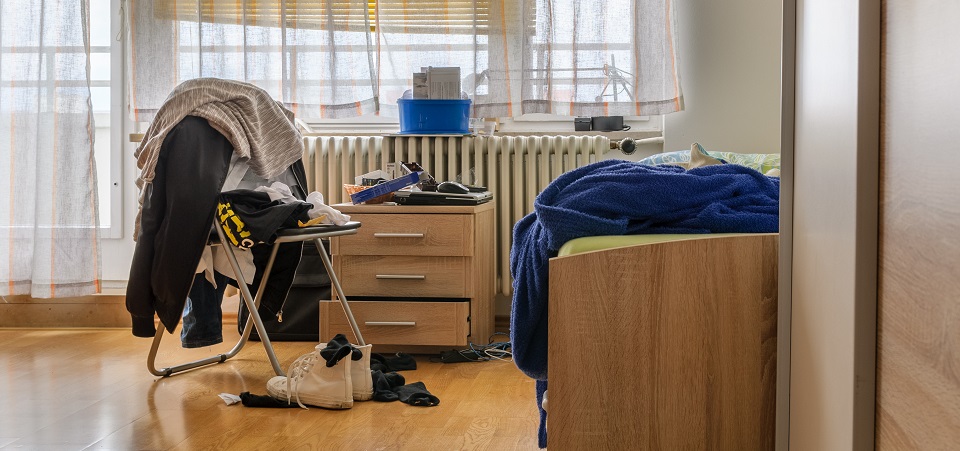When a tenant leaves a property, the landlord may often have to deal with items left behind. While the majority may be deemed as household rubbish and unwanted items that can be disposed of, it is a different matter if the tenant has left personal belongings such as clothing, furniture, and electrical goods.
Solicitor Katie Wright from WHN Solicitors’ Clitheroe office provides a helpful guide for landlords seeking to remove items from a vacant property and the legal process for dealing with it.
A tenancy agreement will often expressly state that the tenant should remove all their belongings at the end of the tenancy.
If belongings are left at the leased premises, they remain the former tenant’s property except where the tenant has deliberately abandoned the belongings.If they are abandoned goods, the landlord will most likely become an involuntary bailee. There is a process adopted by landlords to assist in proving abandonment and compliance with its duties under section 12 of the Torts (Interference with Goods) Act 1977.
It is important to note that it is not clear in the Act whether involuntary bailments are included, but it is advisable to follow this process in any event.
If the belongings are deemed to not be abandoned goods, the former tenant could have a claim for damages.
Communication with the former tenant
It is advisable to prepare a notice that imposes an obligation on the former tenant to take delivery of the left goods by a specific date. The notice should also include the landlord’s intention (if necessary) to otherwise sell or dispose of the goods if they are not collected by that date.
In most cases it is unlikely the former tenant made a prior agreement with the landlord on the basis on which the goods would be left. Even if the goods have been left for no particular purpose, it may be prudent for the landlord to demonstrate that the former tenant has abandoned them and that the landlord has behaved reasonably before seeking to dispose of the belongings.
A prepared notice to serve to collect or sell the items must:
- Specify the landlord’s name and address.
- Give particulars of the goods and address where the goods are being held if they have been removed from the property.
- State the goods are ready for delivery.
- State the date on or after the landlord proposes to sell the goods.
- State the amount, if any, due to the landlord in respect of the goods before giving notice (for example, where the landlord agrees with the former tenant to take possession of the goods for a particular purpose in return for payment such as repair, valuation, appraisal, or storage).
Reimbursement of expenses or storage costs
In general, there is no right for a landlord to be reimbursed for expenses that may be incurred in fulfilling a duty to safeguard the former tenant’s goods.
A landlord who wishes to reserve their right to charge a former tenant storage cost until the former tenant collects the goods should confirm this in a separate covering letter to the former tenant.
Giving notice to request collection or the intention of selling items
A landlord should give a reasonable opportunity for the former tenant to collect the goods before the landlord sells them, which will depend on the circumstances of the tenant.
The landlord should give a notice period of at least three months if the notice includes any amount payable by the former tenant to the landlord in respect of the goods (for example repair, valuation, appraisal, or storage) which is due before the notice of intention to sell.
Notice should be served in writing in any of the following ways:
- By posting a registered letter, or by the recorded delivery service.
- Delivering by hand to the former tenant.
- Leaving at the former tenant’s official address (last known address).
The landlord should also consider attaching the notice to the property in a place where it will be visible, such as on the inside of the door or the window so that it can be seen from outside of the property.
What if I can’t trace the former tenant?
Where the former tenant’s whereabouts are not known, the landlord should consider instructing a tracing agent, to demonstrate that the landlord has taken all reasonable steps to try and contact the former tenant before disposal of the items.
How can I avoid having to deal with left belongings?
There are several measures that you can take to try to avoid this situation:
- Check your tenancy agreement to ensure it includes a clause covering the disposal of left belongings.
- Make a record of an alternative contact for your tenant (such as family or friend) at the start of the lease to ensure you can still reach the tenant at the end of the lease.
- Arrange an inspection at the end of the lease to agree on the disposal of any left belongings.
- Make sure to have the forwarding address for the tenant.
Based within the private litigation department at our Bury office, Katie’s areas of expertise including residential landlord and tenant disputes, contractual disputes, land disputes and boundary disputes, as well as debt recovery.
If you are a landlord seeking advice regarding the disposal of left over belongings, please contact Katie on 01200 408 303 or by email katie.wright@whnsolicitors.co.uk













